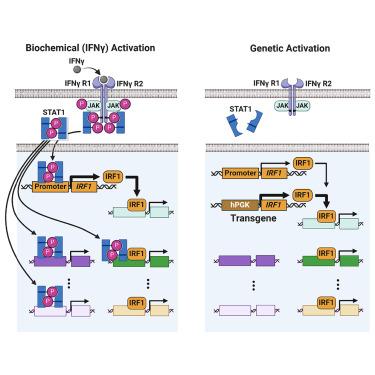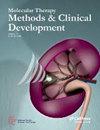通过基因引物持续定制间充质干细胞活化
IF 4.6
2区 医学
Q2 MEDICINE, RESEARCH & EXPERIMENTAL
Molecular Therapy-Methods & Clinical Development
Pub Date : 2024-08-08
DOI:10.1016/j.omtm.2024.101316
引用次数: 0
摘要
间充质干/基质细胞(间充质干细胞)因其安全性和分泌多种免疫调节和再生分子的独特能力,成为一种极具吸引力的细胞治疗平台。然而,众所周知,间充质干细胞需要预处理或诱导才能提高疗效。目前的诱导方法对间叶干细胞活化的控制有限,只能产生短暂的效果,而且往往会诱导促炎效应因子的表达,从而增强免疫原性。在这里,我们介绍了一种基因诱导方法,它能通过控制炎症刺激反应转录因子干扰素反应因子1(IRF1)的表达,选择性地、持续地提高间充质干细胞的效力。超表达 IRF1 的间充质干细胞能重现许多核心反应,这些反应可通过使用促炎细胞因子干扰素-γ(IFN-γ)进行生化诱导来获得。这包括抗炎效应分子的上调和间充质干细胞抑制 T 细胞活化能力的增强。然而,我们的研究表明,IRF1 介导的遗传启动比生化启动更持久,并能规避 IFN-γ 依赖性的免疫原性 MHC II 类分子的表达。可持续激活和选择性定制间充质干细胞引物反应的能力为更全面地激活间充质干细胞用于治疗创造了可能性。本文章由计算机程序翻译,如有差异,请以英文原文为准。

Persistent tailoring of MSC activation through genetic priming
Mesenchymal stem/stromal cells (MSCs) are an attractive platform for cell therapy due to their safety profile and unique ability to secrete broad arrays of immunomodulatory and regenerative molecules. Yet, MSCs are well known to require preconditioning or priming to boost their therapeutic efficacy. Current priming methods offer limited control over MSC activation, yield transient effects, and often induce the expression of pro-inflammatory effectors that can potentiate immunogenicity. Here, we describe a genetic priming method that can both selectively and sustainably boost MSC potency via the controlled expression of the inflammatory-stimulus-responsive transcription factor interferon response factor 1 (IRF1). MSCs engineered to hyper-express IRF1 recapitulate many core responses that are accessed by biochemical priming using the proinflammatory cytokine interferon-γ (IFN-γ). This includes the upregulation of anti-inflammatory effector molecules and the potentiation of MSC capacities to suppress T cell activation. However, we show that IRF1-mediated genetic priming is much more persistent than biochemical priming and can circumvent IFN-γ-dependent expression of immunogenic MHC class II molecules. Together, the ability to sustainably activate and selectively tailor MSC priming responses creates the possibility of programming MSC activation more comprehensively for therapeutic applications.
求助全文
通过发布文献求助,成功后即可免费获取论文全文。
去求助
来源期刊

Molecular Therapy-Methods & Clinical Development
Biochemistry, Genetics and Molecular Biology-Molecular Biology
CiteScore
9.90
自引率
4.30%
发文量
163
审稿时长
12 weeks
期刊介绍:
The aim of Molecular Therapy—Methods & Clinical Development is to build upon the success of Molecular Therapy in publishing important peer-reviewed methods and procedures, as well as translational advances in the broad array of fields under the molecular therapy umbrella.
Topics of particular interest within the journal''s scope include:
Gene vector engineering and production,
Methods for targeted genome editing and engineering,
Methods and technology development for cell reprogramming and directed differentiation of pluripotent cells,
Methods for gene and cell vector delivery,
Development of biomaterials and nanoparticles for applications in gene and cell therapy and regenerative medicine,
Analysis of gene and cell vector biodistribution and tracking,
Pharmacology/toxicology studies of new and next-generation vectors,
Methods for cell isolation, engineering, culture, expansion, and transplantation,
Cell processing, storage, and banking for therapeutic application,
Preclinical and QC/QA assay development,
Translational and clinical scale-up and Good Manufacturing procedures and process development,
Clinical protocol development,
Computational and bioinformatic methods for analysis, modeling, or visualization of biological data,
Negotiating the regulatory approval process and obtaining such approval for clinical trials.
 求助内容:
求助内容: 应助结果提醒方式:
应助结果提醒方式:


